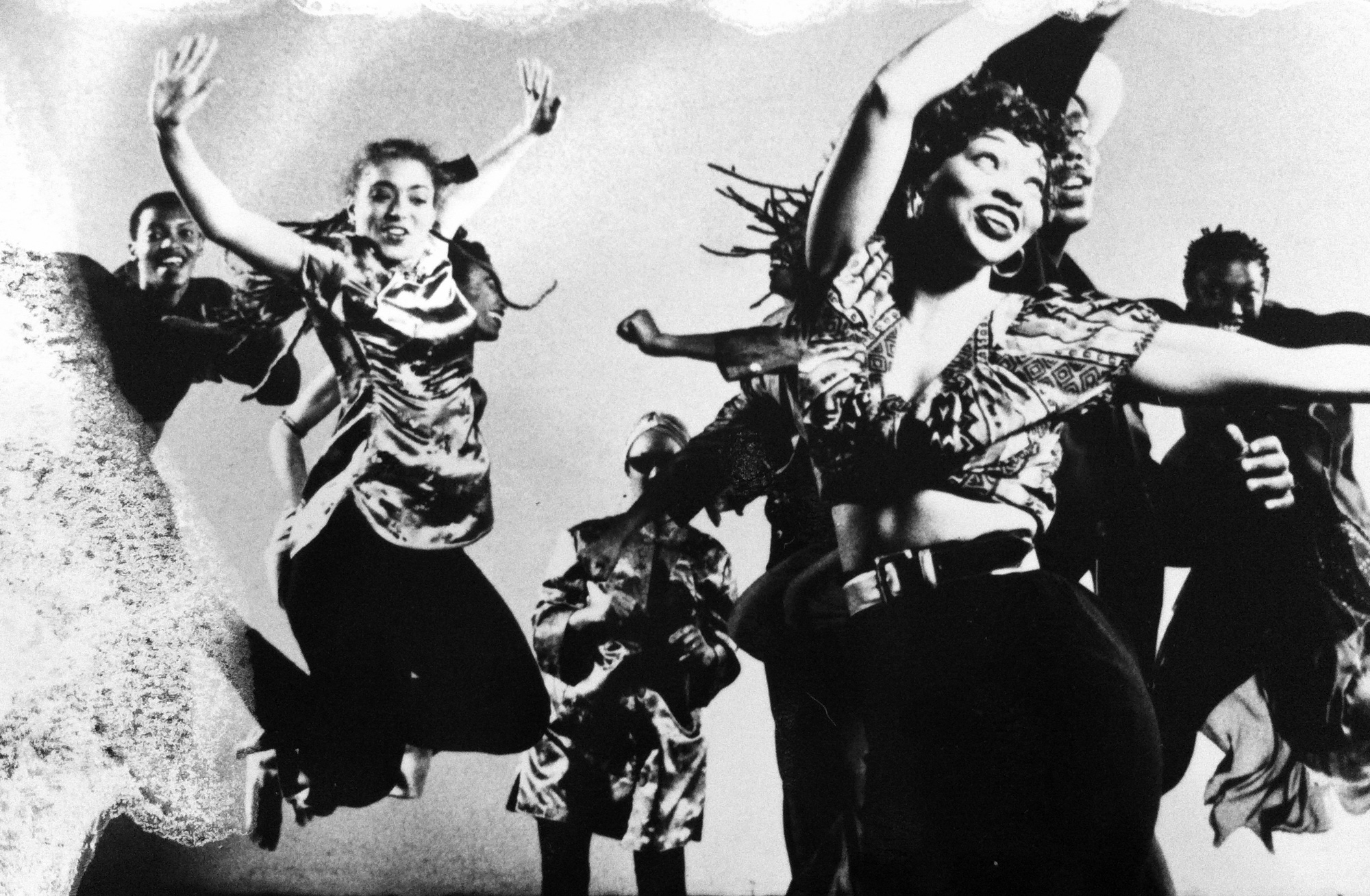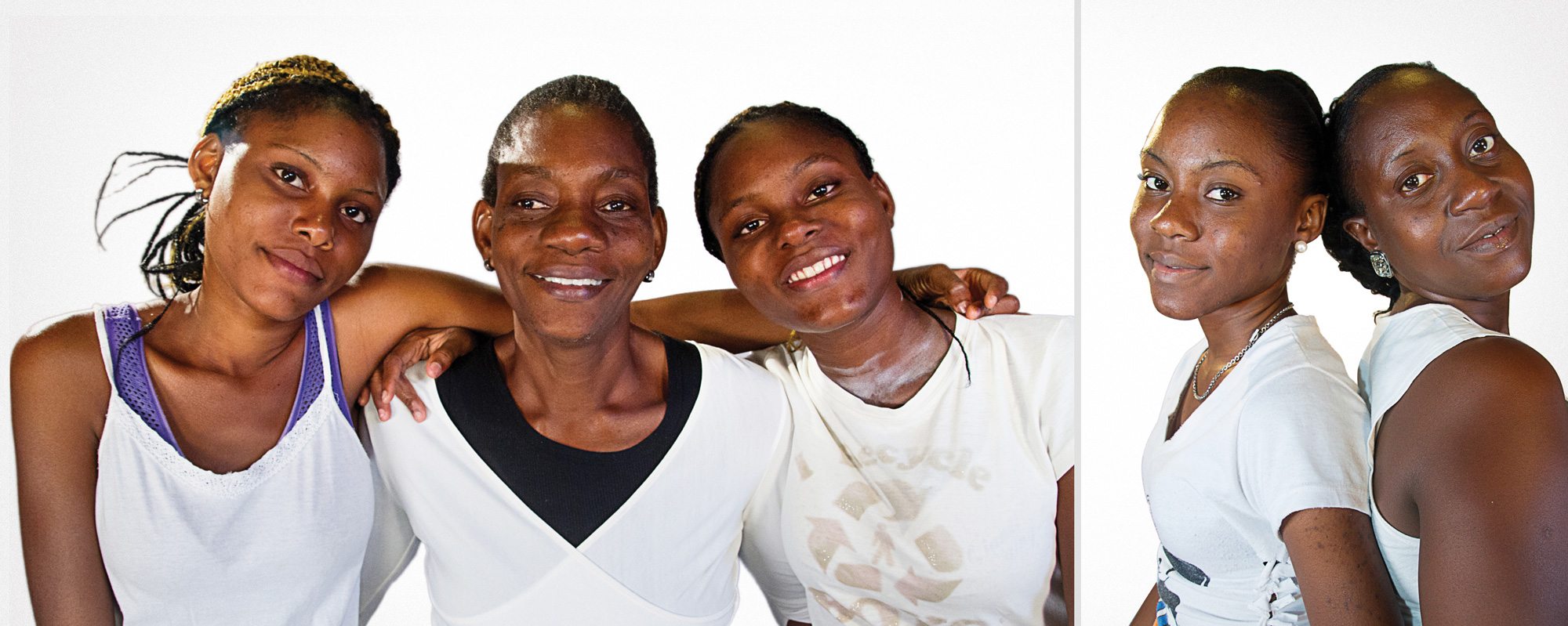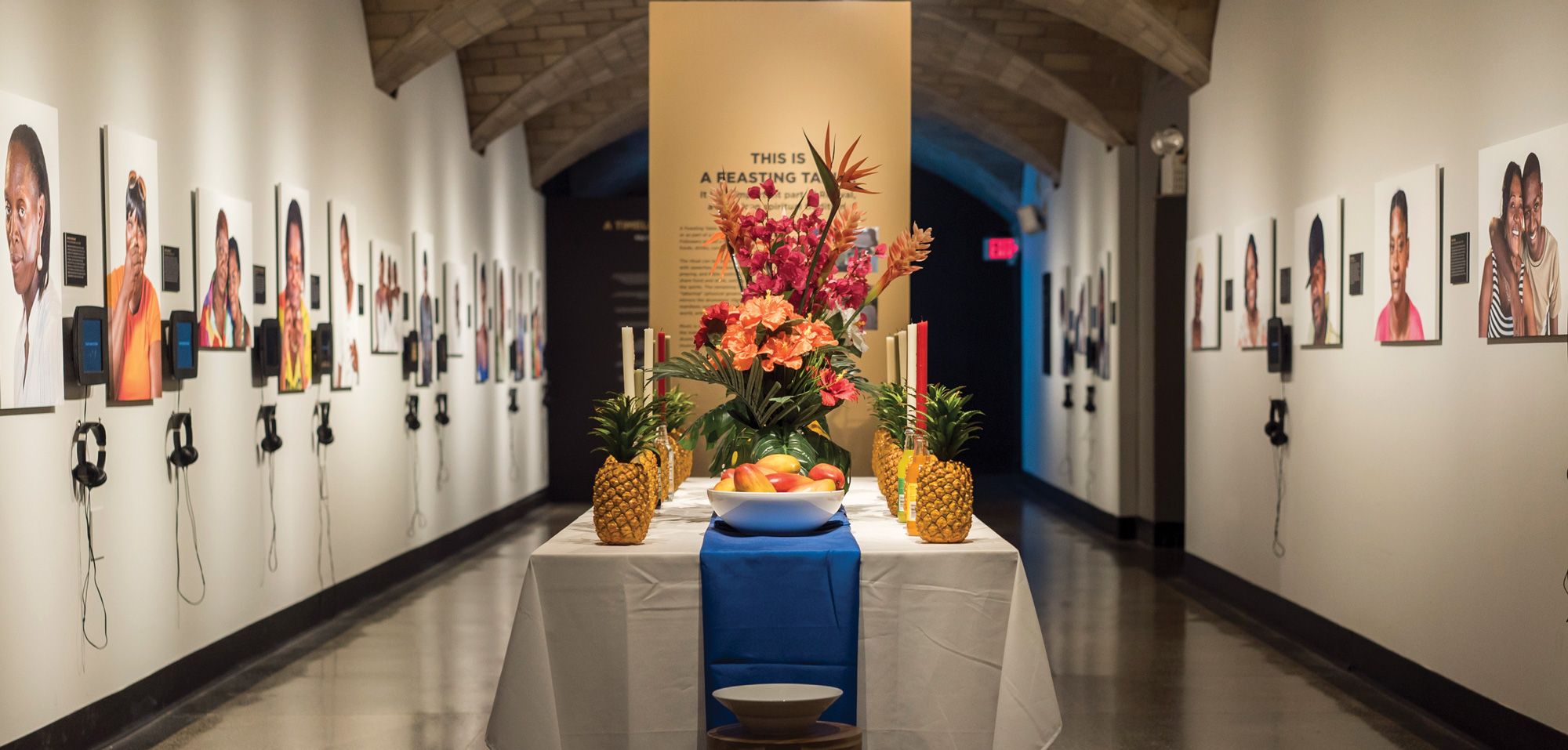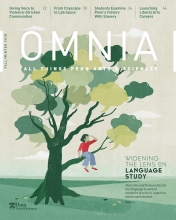The Healing Word
Deborah Thomas embeds herself in communities stricken by violence to chronicle the humanity revealed during the aftermath.
The most difficult interviews were the children. It was 2012 and the filming of Deborah Thomas’ documentary, Four Days in May, was underway in Tivoli Gardens, the site of one of the most violent events in modern Jamaican history.
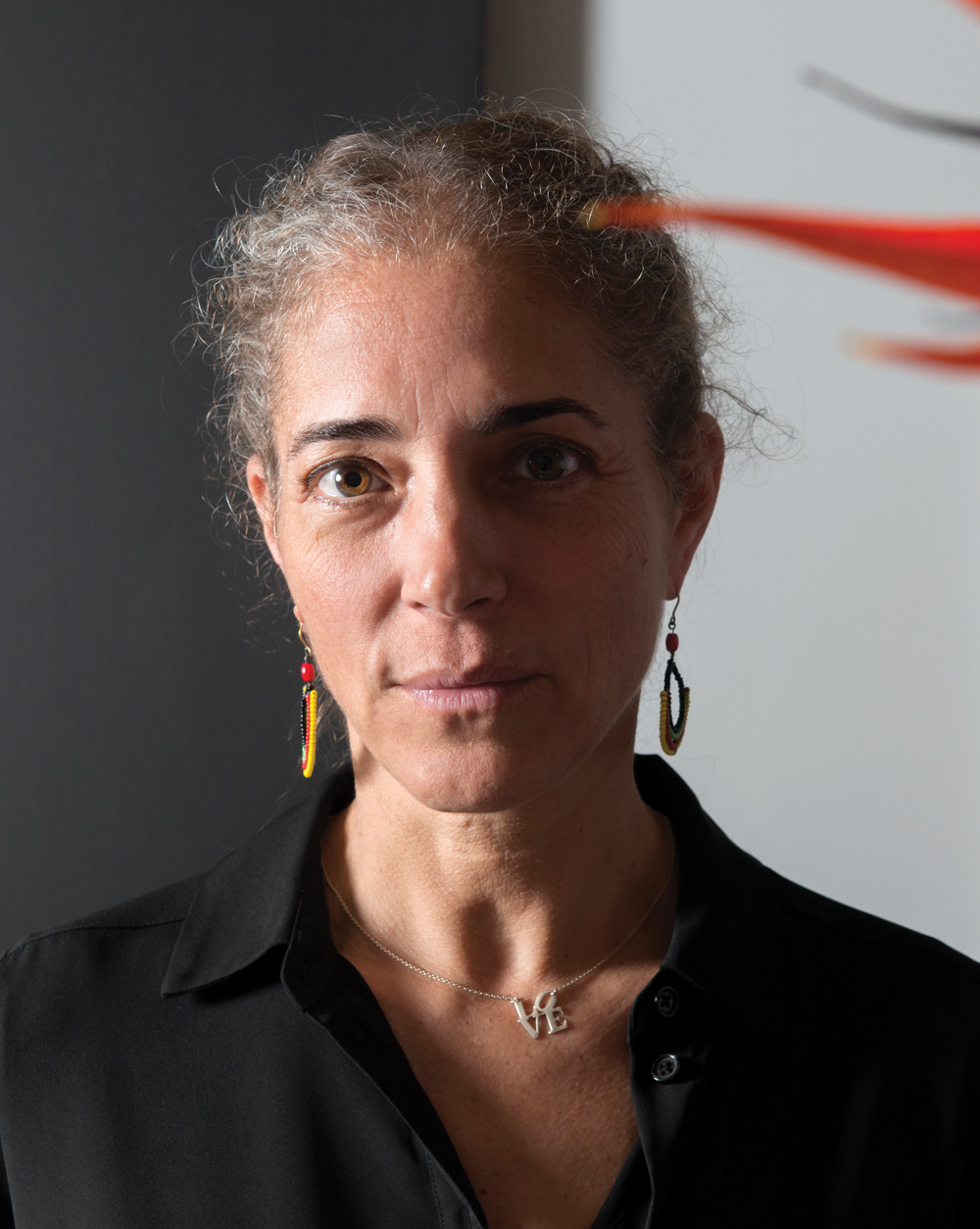
Deborah Thomas, R. Jean Brownlee Professor in the Department of Anthropology
“After talking to the kids, we were all pretty under it. I thought, ‘I can’t do this anymore. Maybe this is wrong,’” says Thomas. “I mentioned that to one of the people from the community and he said, ‘People are going to break down in the studio, but then on the way home they’re always saying how much better they feel having talked about it. Otherwise we bury it.’”
Thomas is a Renaissance woman by any definition. An educator, author, filmmaker, artist, and professional dancer, she has spent her adult life working with victims of violence, using her expertise and artistry to examine the humanity within tragedy.
Thomas, R. Jean Brownlee Professor in the Department of Anthropology, also holds appointments in the Department of Africana Studies, the Graduate School of Education, and the School of Social Policy and Practice. She is a core faculty member of the Alice Paul Center for Research on Women, Gender, and Sexuality, and is Editor-in-Chief of the American Anthropological Association’s flagship journal, American Anthropologist.
Her portfolio of works represents a journey through communities where strife is commonplace, and healing has only just begun. It includes activist performances, books, films, exhibits, and a new initiative meant to bring imaginative student research to the fore. But to fully grasp these projects, you need to return to her beginnings.
Thomas’ career-long interest in the Jamaican people is rooted in the childhood she spent there. Much like the rest of the Caribbean, Jamaica has been shaped by its colonial past. Slavery was abolished in 1834, and in 1937, workers rebelled, which led to formal decolonization and universal suffrage. And though Jamaica gained independence from Britain in 1962, the scars of colonialism remained, leaving racial tensions high and class transformation stagnant.
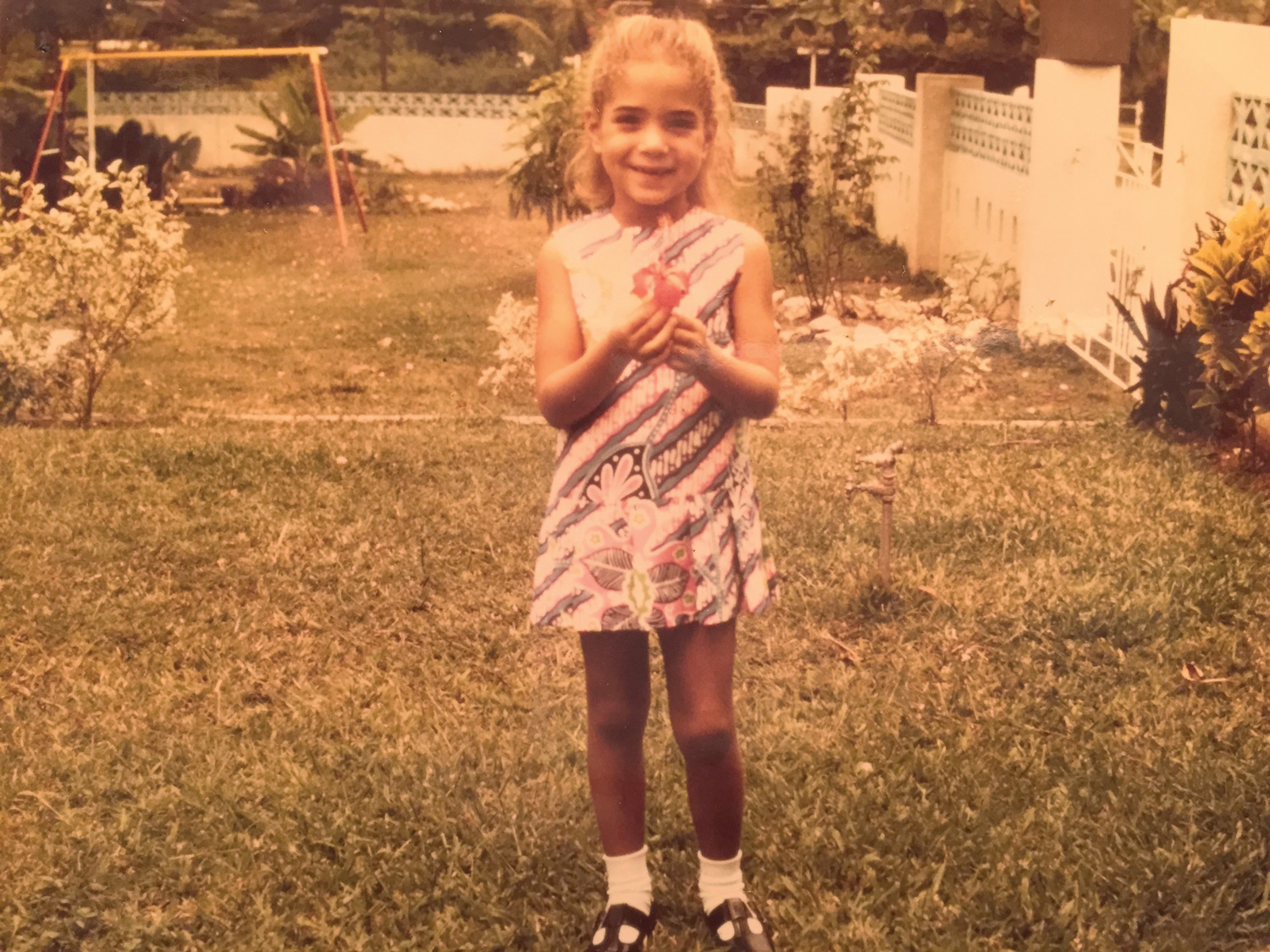
Thomas as a child in her yard in Kingston, Jamaica.
Though her parents came from very different backgrounds, Thomas says their outlook and aspirations were very much the same. Her father was raised in rural Jamaica. After graduating from a technical school he went to work for Shell Oil, and while an employee, applied and was accepted to Marquette University, located in Milwaukee, Wisconsin. There, he met a blue-collar young white woman studying to be a nurse and they soon married—much to everyone’s chagrin, says Thomas.
“This was small-town Wisconsin. There was a lot of misunderstanding and racism, not just on my mother’s side, but on my dad’s side, too,” she says.
Thomas was born in Milwaukee but her family relocated frequently during her youth: to Kingston, Jamaica’s capital and largest city, when she was just three, then back stateside when she was seven.
“I imagine all the moving around taught me to be adaptable, which likely prepared me well for anthropology,” says Thomas.
“I realized I could go back as a grown up, not just as part of a family trip back home, but to develop a different relationship that’s my own. I would go to the library and open the ‘J’ in the card catalog and literally just read every book that they had on Jamaica.”
Later, when her academic trajectory began to take shape, she developed a new perspective on her early years.
“I realized I could go back as a grown up, not just as part of a family trip back home, but to develop a different relationship that’s my own. I would go to the library and open the ‘J’ in the card catalog and literally just read every book that they had on Jamaica,” says Thomas.
Thomas attended Brown University as an undergraduate, where she majored in semiotics, a film production and theory and linguistic communications degree. Her senior thesis was a dance theater production. After graduating, she moved to New York to dance with several different pick-up companies, also working as a dramaturg at Crossroads Theatre Company in New Brunswick, NJ. While at Crossroads, she received a call from the Urban Bush Women—a New York-based, Afro-modern dance company that galvanizes artists, activists, audiences, and communities through performances, artist development, education, and community engagement—about working on the script for a piece called “Praise House.”
“It was about Black women who were visionary artists in the rural south, early 20th century,” says Thomas. “I couldn’t do it because I was moving to Brazil, but when I got back I called, just to make the connection, because that was one of the dance companies that I really loved and that really spoke to me. In college I had worked from a research-to-performance methodology, so using the arts as a tool for social change and consciousness raising is what I was passionate about.”
In addition to spending 35 weeks out of the year performing, Thomas also participated in the company’s Community Engagement Projects, which saw her working with different grassroots organizations to realize a program of action.
“I worked in a puppet theater in the Ninth Ward in New Orleans. They were at war with this neighboring gang and they wanted to invite them to a block party at the end of the five weeks of our work together and not have any incidents,” says Thomas. “What that looked like for us was a lot of relaxation techniques: improv, conflict resolution through movement—just trying to chill everybody out. We also worked with their puppets to stage a performative event, but then embody it, too. The block party was super fun and it remained peaceful.”
“I had this plan in my head to apply for individual grants and travel all over the world. My dad said that if I did this in the context of a university, maybe someone would pay me. It was an ‘Oh’ moment.”
When time came around to either sign a new contract with the company or move on, Thomas’ parents brought up going back to school.
“I really loved the work I was doing, and I wanted to continue at a larger scale. I had this plan in my head to apply for individual grants and travel all over the world. My dad was like ... right,” Thomas laughs. “And he said that if I did this in the context of a university, maybe someone would pay me. It was an ‘Oh’ moment.”
Thomas was accepted to New York University (NYU) and entered into the Latin American and Caribbean Studies Master’s program.
“My first class was with an anthropology professor and I just fell in love because I didn’t know there was a word for what I had been doing all along: learning by participating with people and figuring out what was going on in a hands-on sort of way,” Thomas says.
Thomas was brimming with excitement, but she didn’t have a grasp on how to read like an anthropologist—like an academic.
“I was just excited all the time, so I’d write these one-page thinksheets that were really six pages and totally ramble-y and I didn’t really get the arguments of the stuff we were looking at,” Thomas says. “But my professor, Constance Sutton, really took me under her wing and saw potential and took a long time to kind of shape me and mold me into what could pass for an anthropologist.”
After earning her Ph.D. and experiencing teaching for the first time at NYU, Thomas accepted a two-year postdoc position at Wesleyan University, in its Center for the Americas. Her first tenure-track position was at Duke in the Department of Cultural Anthropology. Thomas’ debut book, Modern Blackness, an ethnographic exploration of Jamaican identity in the late 20th and early 21st centuries, is a reworking of her doctoral dissertation. Her advisor had suggested she talk to one of the editors at Duke University Press, whom she happened to run into in the halls during a conference she was attending.
“He rejected it, so I called him back just to get some feedback for improving it and he ended up deciding to send it out after all,” Thomas says.
Thomas started a second project on hotel workers but then a gang war broke out in the Jamaican community where she did her Ph.D. field work. “One of the kids there that I had worked with was killed, and I felt an urgency to figure out why that happened and ultimately this quest became my second book, 2011’s Exceptional Violence: Embodied Citizenship in Transnational Jamaica.”
Exceptional Violence is an examination of postcolonial state formation in the Caribbean, considered across time and space. Through an analysis of Jamaica’s national media, works of popular culture, practices of punishment and discipline during slavery, the effects of intensified migration, and Jamaica’s national cultural policy, Thomas argues that violence in Jamaica is the complicated result of a structural history of colonialism and underdevelopment, not a cultural characteristic passed from one generation to the next.
Thomas is also co-editor of Globalization and Race: Transformations in the Cultural Production of Blackness, which includes essays by leading anthropologists and argues that a firm grasp of globalization requires an understanding of how race has constituted, and been constituted by, global transformations.
Listening to Thomas discuss her films reveals a passion that hearkens back to her early academic aspirations. Her debut, 2011’s Bad Friday: Rastafari After Coral Gardens, is a collaboration with her husband, John L. Jackson, Jr. of Penn, who is Richard Perry University Professor of Communication and Anthropology, Professor of Africana Studies, and incoming Dean of the Annenberg School for Communication. Junior “Gabu” Wedderburn, a master drummer and composer who features in Broadway’s The Lion King, wrote and edited the music and sound for Bad Friday, and was also a co-producer.
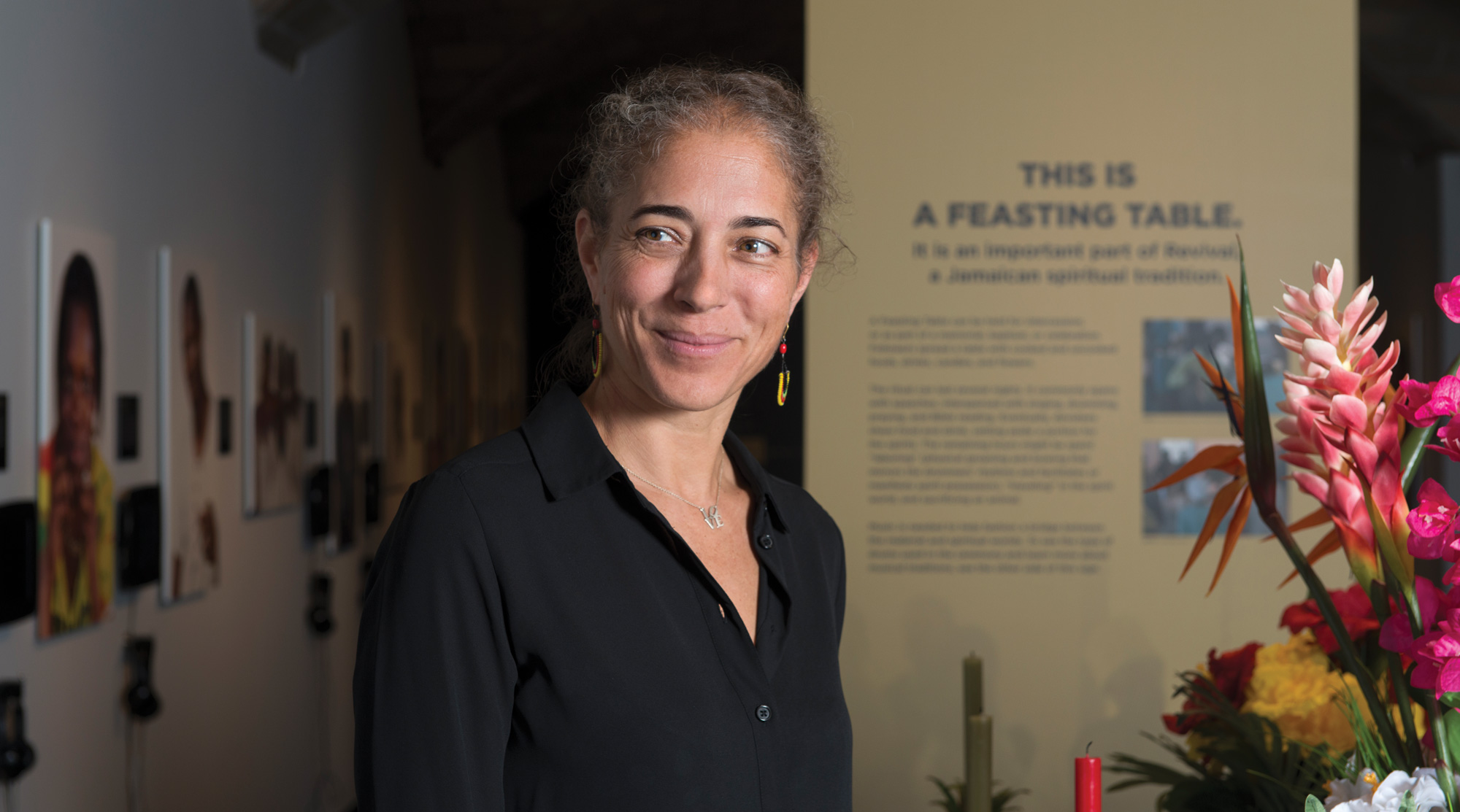
Deborah Thomas at the “Bearing Witness: Four Days in West Kingston” exhibit. Housed at Penn Museum, it is part art installation, part memorial, and part call to action.
The film chronicles the history of violence in Jamaica through the eyes of its most iconic community—Rastafari—and shows how people use their recollections of violence to imagine new possibilities for the future. Thomas says that while early anthropologists would have framed Rastafari in relation to millenarianism—the belief in a coming ideal society created by revolutionary action—most today see the movement as a prophetic realignment of Enlightenment racial hierarchies.
“In Rastafari there’s also a strand of Black consciousness from the days of slavery moving forward,” Thomas says. “Putting those two together ends up with it being the most recognizable influential movement in Jamaican history. It’s a rejection of racial hierarchies that exist under the colonial status quo and of the veneration of things white.”
The incident at the heart of the film happened in 1963 in the Coral Gardens neighborhood near Montego Bay at a moment in time when tension surrounding Rastafari was already high. It centered around a land dispute between local Rastafari men and a British sugar manufacturer and landowner. A confrontation with police left eight people dead, including one officer, and led the Jamaican prime minster to order police to “Bring them in, dead or alive.” The political powers in Jamaica labeled the conflict a “Rastafari uprising,” a smokescreen that allowed it to send in police from all over the island, with the U.S. government providing support.
The aftermath of the incident saw security forces rounding up all Rastafari anywhere, most of whom had no idea about the incident in the first place. The State tortured and tormented hundreds. Men in the documentary recount stories of persecution. One was framed for rape on the sole basis of his long beard matching a description of the assailant.
“Judging merely by the number of casualties, some people wouldn’t constitute it as a massacre, but for Rastafari it really was. And there had never been a formal investigation or apology or anything like that,” Thomas says. “The community in western Jamaica started annual commemorations where elders who went through the experience stood and testified. That’s what we started following. We tracked down everybody we could find who was still living who had gone through that and recorded their narratives.”
Thomas held a sneak peek of the film at the next annual commemoration.
“It was really amazing being in this open stadium with hundreds of people, including the people who were in the film,” says Thomas. “We split up and stationed ourselves around some of the men who were in the film just to listen to what it felt like to watch themselves and how they interacted with their friends who they were there. Jamaica’s public defender attended the commemoration, and ultimately agreed to pursue a case for recompense for the sufferings caused by the State.”
There was a more formal premiere of the film later that summer at the Bob Marley Museum, named for the famed Rastafari musician. The film has since been named an Official Selection at the Hollywood Black Film Festival and the Trinidad and Tobago Film Festival. The film’s accompanying soundtrack features Uzalo and Ancient Vibrations and was produced by Wedderburn.
Thomas’ most recent film project, Four Days in May, a collaboration again with Wedderburn that began in 2012, plus Deanne M. Bell of the University of East London’s School of Psychology—who was instrumental in the genesis of the project—led Thomas down another dark path in modern Jamaican history, opening a wound in hopes of helping a community to heal.
Post-independence, some downtown communities in Jamaica were ruled by partnerships of legitimately elected members of Parliament and local gang leaders known as dons. The dons guaranteed the votes by keeping a strong arm on people in the community, while the government would give out job contracts and other social benefits, and often turn a blind eye on drug circuits.
In 2010, the U.S. issued an extradition order for Christopher Coke, the don of Tivoli Gardens, on drug-related charges. Bruce Golding, the Prime Minister of Jamaica and Member of Parliament for West Kingston, hired a lobbying firm in an attempt to stay the extradition order.
“This became a huge scandal in Jamaica,” says Thomas. “The concern was that Golding may have used party money.”
Ultimately, Golding instructed the Attorney General to sign the extradition order, and the resulting incursion lasted four deadly days, and saw 1,700 men carted away from their homes, 75 of which were executed.
“He went on TV to say, ‘This is happening on Monday. I’m going to send in troops.’ So that weekend the dons are preparing. And the State is preparing. And everybody is getting ready for the war that’s going to take place on the Monday, which of course does when armed forces go house-to-house searching for Coke,” says Thomas.
One of Thomas’ collaborators on the project, Ken Lum, Director of Fine Arts at Penn Design, selected students to travel to Tivoli and lead photography workshops for an exhibit that would chronicle community members’ painful journeys. They began to record the victims’ testimonies.
The accounts were harrowing.
Marjorie Williams recalls her two sons being forced outside for questioning where they were made to lie down in a garden as they cried for her before they were executed.
Alliyah Levy, a teenager, recounts the coming of the soldiers: “At that moment, I was sick. I’m an asthmatic child, and the gunshots were firing, and we were under the table. My brother started to read his bible and said, ‘God...’” She trails off, before breaking into tears. Maxine Love, her mother, remembers shuffling her and her brother from house to house to stay away from soldiers, with no food for three days.
The film intersperses shots of the closed community, as well as overhead satellite shots, while offering no-frills close-ups of the victims retelling their raw experiences. Thomas, Bell, and Wedderburn decided the best course was to have the victims concentrate on their own firsthand experience. “For many of the young men, those discussions involved detailing a series of abuses and torments as they described having been taken from place to place in a truck and being taunted,” says Thomas. “For those who then made it out of that experience alive, there is the uncertainty of what was going to happen next.”
Thomas and her collaborators are now entering the film into festivals, with the hope of attracting a distributor. A preview was held at a conference for the Association for the Study of the Worldwide African Diaspora, and it will officially premiere at the BlackStar Festival in Philadelphia.
There have been some steps taken by authorities to recognize the bloodshed in Tivoli. There was an enquiry and a public apology, but Thomas says that the power vacuum created by Coke’s eventual capture has left the community unstable and dangerous.
Probably the most important viewing of the film has already taken place—a grassroots screening in Kingston at the same studio where the team recorded interviews.
“It was a phenomenal experience,” says Thomas. “There were people there who were in the film. There were other people who were from the community or neighboring communities who weren’t in the film, but also got up spontaneously and shared their own experiences, then others who talked about the legacy and long-term effects of slavery and imperialism, and what they think it means for Jamaica’s future politically.”
Thomas’s newest book project draws on her work in Tivoli Gardens as well as the parish of Clarendon, and archival research on surveillance in the British and Jamaican colonial records and the U.S. State Department. The book, Political Life in the Wake of the Plantation, probes some of the questions that often arise about state violence outside the context of active war: Why does the state crack down on a movement when it does? When does a threat become unbearable and actionable? What are the entanglements that matter? And what does sovereignty feel like?
“The new book is an attempt to think through the current socio-political moment—and the histories that have produced it—in other-than-normative terms,” says Thomas. “I wanted to return to the language I know best, that which is embodied, so I could imagine these transformations not merely in terms of political economy, but also as something more phenomenological and affective. It’s also an attempt, like Four Days in May, to encourage us all to understand our own entanglements—and complicities—in historical processes, so at the end my own story is woven through the various narratives in the chapters.”
Another initiative she’s leading at Penn is the establishment of a new Center for Experimental Ethnography. Designed to be a hub for faculty across disciplines and schools who are committed to ethical, engaged, and, most of all, experimental multimodal work, the Center represents Thomas’ quest to provide others an opportunity to experience research in exceptional ways. In the spirit of her own activism through dance, Thomas also considers building on already-existing connections with visual, performative arts, and documentary institutions in West Philadelphia and beyond, crucial to the Center.
The Center will bring in fellows each semester, provide a postdoc position, and house the graduate student collective CAMRA, which among other activities hosts an annual event called the Screening Scholarship Media Festival. In this way, it is part of a broader emb- race of digital humanities, but in this case emphasizes ethnographic research methods.
“What does it look like to peer review a photo collage or a long one-take film? We need to help develop the tools to evaluate not only the skill of a student, but his or her contributions.”
“If we have a student who decides they want to do their dissertation as a film rather than as a written product, how do we then make that legible to other institutions when the student is on the market for a job?” says Thomas. “What does it look like to peer review a project that’s not a journal article, but instead a photo collage or a long one-take film? We need to help develop the tools to evaluate not only the skill of a student, but his or her contributions to scholarly debates and the community.”
For Thomas, these alternative perspectives help define how we view the human experience. “Bearing Witness: Four Days in West Kingston,” the exhibit Thomas co-curated that was the genesis of Four Days in May, as well as the basis for the beginning of her new book, is now on display through December 2019 at the Penn Museum in Philadelphia. Part art installation, part memorial, and part call to action, the installation sheds light on those tragic events in Tivoli and their aftereffects, utilizing video, photography, written biographies, and audio accounts.
“One of the questions we asked people in the studio was, ‘What do you think has to happen nationally in order for you to move forward?’” says Thomas. “At the time, I think people were still too traumatized to really think about the future. It was dead space mostly. But now there’s a little bit more distance. Enough has happened that the victims are able to imagine a different kind of future.”
